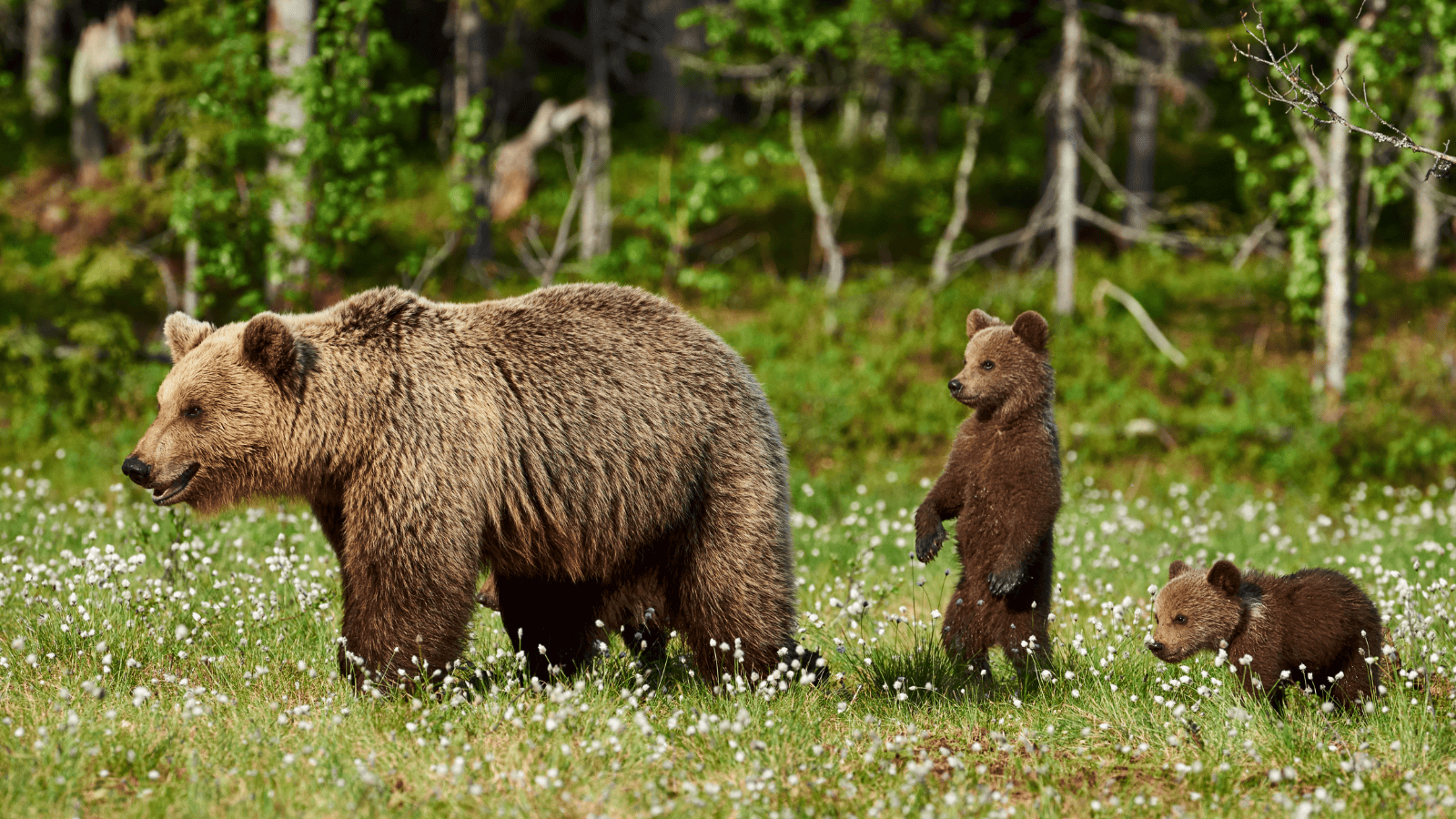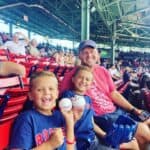Jake Cain is an entrepreneur and writer from Cincinnati, Ohio. He spends his free time driving around the country in his late 90’s conversion van, affectionately known as the “Monster Van” with his wife and 3 boys.
Visitors flock to national parks each year to catch a glimpse of stunning landscapes and, of course, a variety of wildlife species. From majestic elk to playful otters, these animals can be fascinating to watch and photograph.
However, it is essential to remember that these wild animals can be dangerous if approached or provoked. That’s why park officials have specific rules and guidelines when it comes to human interaction with wildlife.
General Rules
When visiting a national park, it’s important to remember that you are a visitor to the animals’ home.
To ensure your and the animals’ safety, here are some general rules you should follow…
Stay at a Safe Distance: No Selfies!
It’s important to keep a safe distance from wildlife. The National Park Service recommends staying at least 100 yards away from bears and wolves and 25 yards away from all other animals. If you’re too close, the animal may feel threatened and become aggressive.
If animals react to your presence, you are too close. If you’re close enough for a selfie, you’re definitely too close! Use binoculars or a zoom lens and move back if wildlife approaches you. Let wildlife be wild and observe from a distance.
Do Not Feed the Wildlife
Feeding wildlife is not only dangerous, but it’s also illegal in national parks.
Human food is unhealthy for animals, and feeding them can cause them to depend on humans for food. It can also lead to aggressive behavior and even result in the animal being euthanized.
Additionally, wildlife feeding can cause the animals to lose their natural fear of humans, which can be dangerous for both animals and us.
It’s Not a Petting Zoo: Do Not Touch or Approach Animals
It’s important to remember that wildlife is just that – wild. These animals are not domesticated and should not be treated as such.
Never approach or touch wildlife, even if they seem friendly or harmless. Wild animals can be unpredictable and may attack if they feel threatened. In addition, touching wildlife can spread diseases to both humans and animals.
Specific Wildlife Rules
When visiting National Parks, it’s important to follow specific rules for interacting with wildlife to ensure your safety and the safety of the animals.
Here are some specific guidelines for interacting with bears, moose, bison, and elk:
Bear Safety

Bears are one of the most iconic animals in National Parks, but they can be dangerous. To avoid bear encounters, make noise while hiking and stay on designated trails.
If you encounter a bear, stay calm, speak softly, and slowly back away. Never approach a bear or try to feed it. If a bear charges you, stand your ground, make yourself look bigger by raising your arms, and use bear spray if you have it.
Moose Safety

Moose are large, unpredictable animals that can be aggressive if they feel threatened. Keep your distance and never approach a moose, especially during mating season when they can be particularly aggressive.
If you see a moose on a trail, give it plenty of space and wait for it to move away before continuing your hike.
Bison Safety

Bison are massive animals weighing up to 2,000 pounds and running up to 30 mph. Stay at least 25 yards away from bison and never approach them.
If a bison approaches you, move away slowly and do not run. If a bison charges you, find cover or a sturdy object to hide behind.
Elk Safety

Elk are beautiful animals, but they can also be dangerous. During mating season, bull elk can become aggressive and charge at people who get too close.
Keep a minimum distance of 25 yards away from elk and never approach them. If an elk charges you, find cover or a solid object to hide behind.
Tips for Wildlife Viewing
Wildlife viewing is one of the most exciting activities in national parks. However, it is important to remember that these animals are wild and should be treated respectfully.
Here are some tips to ensure a safe and enjoyable wildlife viewing experience.
Use Binoculars or a Telephoto Lens
The best way to view wildlife is from a safe distance. Use binoculars or a telephoto lens to get a closer look without disturbing the animals. This will also allow you to observe their natural behavior without interfering.
Remember, touching, taunting, or disturbing wildlife in national parks is illegal.
Be Quiet and Patient
When viewing wildlife, it is important to be quiet and patient. Loud noises and sudden movements can startle animals and cause them to flee.
Instead, find a quiet spot and wait for the animals to come to you. This will also give you a chance to observe their natural behavior.
Respect Closures and Restrictions
National parks have specific guidelines for wildlife viewing, including minimum viewing distances and food storage requirements.
Always check for closures and restrictions before heading out on the trail. These closures are put in place to protect both you and the animals. If an area is closed, do not attempt to enter it.
Frequently Asked Questions
What Precautions Should I Take When Encountering Wildlife in National Parks?
When encountering wildlife in national parks, it is important to remember that they are wild animals and can be unpredictable.
Keep a safe distance from them and avoid getting too close or disturbing them. Never feed or touch them, as this can be dangerous for you and the animal. Always follow the park’s guidelines and rules for interacting with wildlife.
How Can I Safely Watch Wildlife in Their Natural Habitat?
The best way to safely watch wildlife is to give them plenty of space and observe them from a safe distance.
Use binoculars or a camera with a zoom lens to get a closer look. Avoid making loud noises or sudden movements that could startle them. Remember always to respect their space and natural habitat.
Why Was The Yellowstone Bison Calf Rejected and Euthanized?

Discover the story behind the controversial euthanization of a bison calf in Yellowstone National Park and the consequences of human intervention in wildlife conservation efforts. Learn about the incident that occurred when a Hawaii man tried to help a newborn bison calf but ended up causing its herd to reject it, resulting in the calf’s euthanization. Learn about the park’s regulations and guidelines and the importance of respecting wildlife and their natural behaviors in protected areas.
When Bison Selfies Go Wrong: Highlighting The Internet’s Funniest Reactions

Get ready for a good laugh and a friendly reminder to keep your distance from bison with this hilarious article about a viral bison selfie gone wrong. From National Park Service selfie stats to witty Twitter reactions, this article has got it all. Learn from this woman’s mistake and avoid winning a Darwin Award by keeping your distance from these majestic creatures.
How To React If You Encounter A Bear: A Safety Guide

A bear sighting while hiking can be exciting but also frightening! Discover the dos and don’ts of bear encounters, including how to make noise to avoid encounters, how to react if you see a bear, what to do if a bear attacks, and wildlife viewing etiquette. Gain valuable insights into how to stay safe in bear country and respect wildlife and their natural behaviors in protected areas.
Interacting With Wildlife In National Parks: Wildlife Safety

Wildlife sightings are one of the most exciting parts of visiting a national park! Keep yourself and the animals both safe with these dos and don’ts of wildlife encounters, including how to stay at a safe distance, never feed or touch the animals, and specific guidelines for interacting with bears, moose, bison, and elk. Gain valuable insights into how to respect wildlife and their natural behaviors in protected areas, and enjoy a safe and enjoyable wildlife viewing experience.

